
Hatching butterflies is probably a pretty standard experiment and study for students, in both formal and home school educations alike. It’s one that can be used as a Science participation lesson more than once in the course of ones education, because the benefits of the lesson are different for various ages.
For very young students, such as toddlers-K, it’s a really fun & exciting process to watch every day. At this age, they are full of both intelligent, and sometimes humorous, questions. They are able to grasp the basic understanding of the stages. Some little ones may rather non-nonchalantly accept the transformation from a caterpillar to a butterfly, simply as magic, in a way.
Older students comprehend the cycle and the information of the lesson at hand, on a bit of deeper level. Their more mature experiences of curiosity and intake of the study of nature and Creation, throughout their ages of years, has led them to a wiser perspective. They are more fascinated than ever, by the works of God, and the magnitude of His power. They may also more readily make observations, younger ones may not pick up on, such as happened in our family, that I’ll tell you about shortly, further into this post.
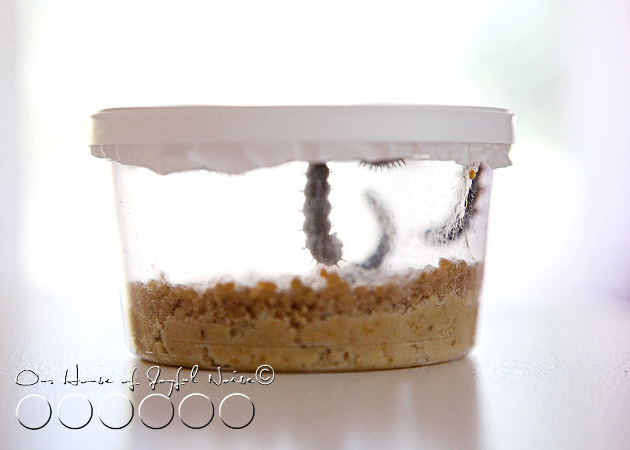
Our study was of the butterfly species, the Painted Lady. We purchased what we needed at a lovely nearby place called The Butterfly Garden Boutique, in Bourne, MA. The owner was very friendly, helpful and informative, and supplied us with live caterpillars in a container with their food, and a small net pavilion. (Larger pavilions are available as well.).
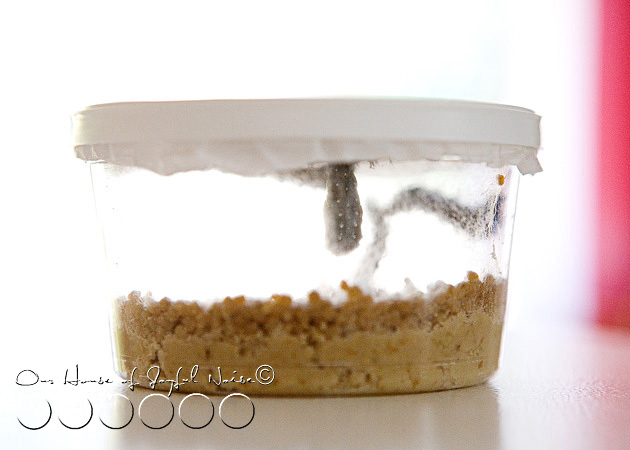 We had 5 live caterpillars, and it wasn’t a day or 2 after getting them home, did a couple begin to make their way to the top of the container. Inside the lid of the container provided, is a fabric like piece of material, for the caterpillars to attach themselves to for their transformation process. We learned they do this, by dispensing a thread from a hole beneath their mouths.
We had 5 live caterpillars, and it wasn’t a day or 2 after getting them home, did a couple begin to make their way to the top of the container. Inside the lid of the container provided, is a fabric like piece of material, for the caterpillars to attach themselves to for their transformation process. We learned they do this, by dispensing a thread from a hole beneath their mouths.
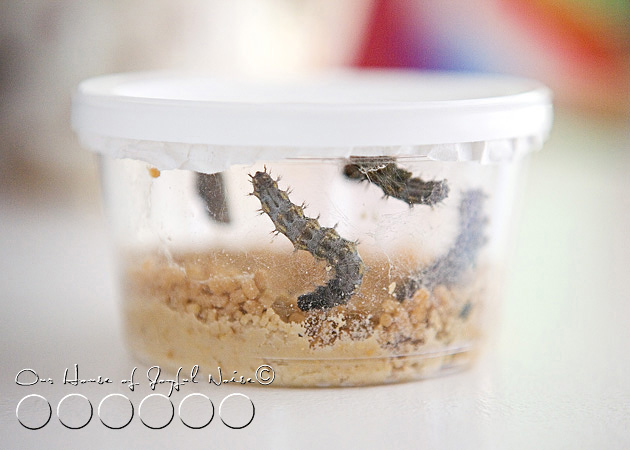
By the following day, the rest followed.
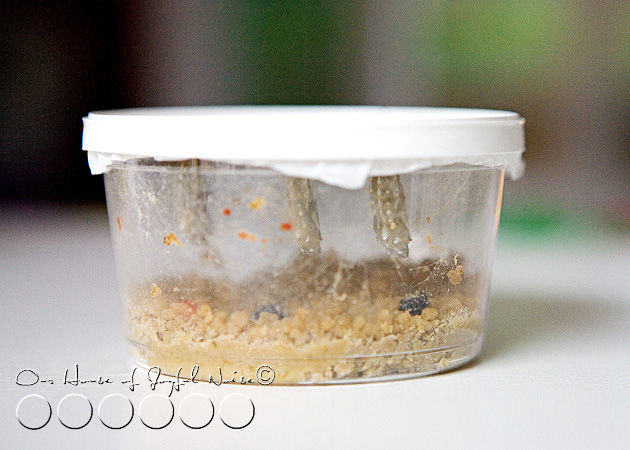
Once each of the 5 were hanging, the transformation begins rapidly. They first shed their skin, revealing a the green casing that is their chrysalis.
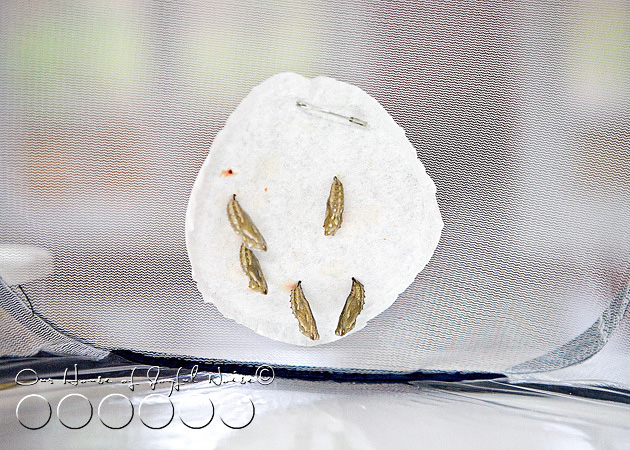
Once we had 5 chrysalises attached to the material, we carefully took off the lid of the container, and pinned the material to the inside of our pavilion near the bottom, as instructed.
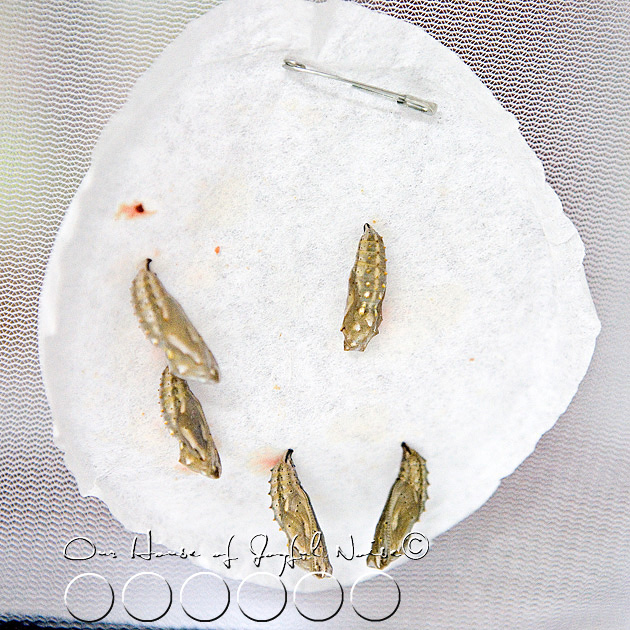
Here is a closer look. It was evident which chrysalises attached first, and which were more recently formed. It was absolutely fascinating to learn, that the inside of the chrysalises in this pupa stage, the caterpillar is turning into a complete liquid form, before forming into a butterfly. In this photo, you can see the the patterns of butterflies, through the somewhat transparent casing.

As a reference of sizes, this is our small tent-like pavilion, and you obviously can see the chrysalises pinned to the back bottom. The door is only unzipped and open for the sake of this photo. Throughout the entire study, the pavilion resided here on the shelving table-top, between our school room and kitchen. The kids were allowed to look anytime, but not touch the tent, as to not disturb the chrysalises. Of course, I carefully did open the door now and then, to take photos.
Some mornings later, there was all kinds of excitement in the house…..
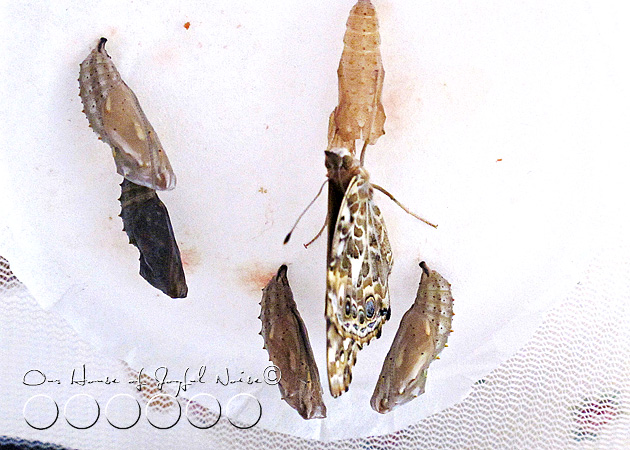
Michael got up (very) early for his morning church job, and discovered a butterfly had emerged sometime during the night! He woke the little ones up to show them, and soon they were running through the house to spread the word. To {A} and Mama. Darn! We missed it.
Right above the butterfly, you can see the empty casing the butterfly emerged from.
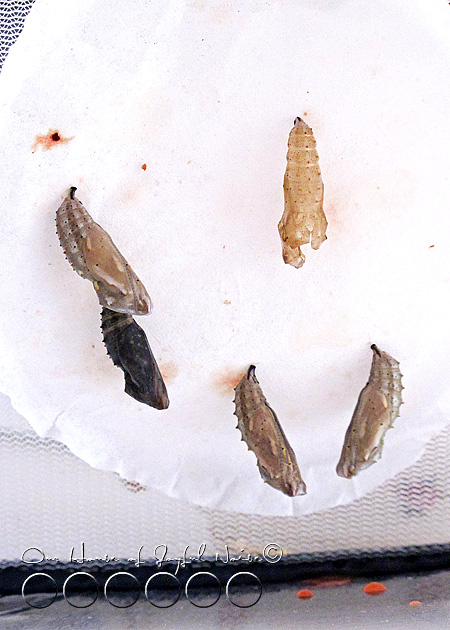
Those who observe butterfly hatching for the first time, may be surprised to learn that the hatching process is somewhat of a messy business! The red staining you see, almost appears to be blood, but it is actually just the leftover liquid excreted from the formation of the butterfly, through the pupa stage. In other words, waste.
Just as mentioned before, it is even more noticeable now, which butterflies are likely to hatch next. Can you guess? It would be the darkest one.

Our first hatched butterfly of the 5.
As unfortunate luck would have it, we unbelievably missed the actual emerging of every butterfly from it’s casing! Seriously. The 2nd one came out while we were not aware, because we were busy doing a math lesson. 2 others emerged while we were sleeping, once again. And the 5th was while we were not home. So you know what this means! We need to do this again!
At the beginning of this post, I was talking about the benefits and differences of children doing a butterfly metamorphosis study. Our oldest, {A}, hatched butterflies twice, consecutively, when she was very little, and an only child. This time, being much older and wiser teenager, was a whole different experience for her, such as the following occurrence:
It was fairly late at night, and the little ones were in bed, when I was in the kitchen and peeked in at the butterflies, and spontaneously exclaimed, “Oh my!”. {A}, who was in the kitchen too, looked in and, without surprise or question, said “Oh yeah, they’ve been doing that like, every night.” Then gave me some wide eyes and a giggle. Butterflies waste no time, to get mating, once they are emerged! They only live 2-3 weeks, so they have little time to get pro-creatin’! ; ) Over the course of our study, there was many observations she had had, as the oldest, and more in-depth facts she was aware of. So it’s a continual learning process as the kids grow, and still the fascination of the whole cycle, never wears off. Not even for me!
We decided that the evening of {A}’s 14th birthday, was the perfect time to release our butterflies. We had had a wonderful family day together, and the time had come, and seemed right.
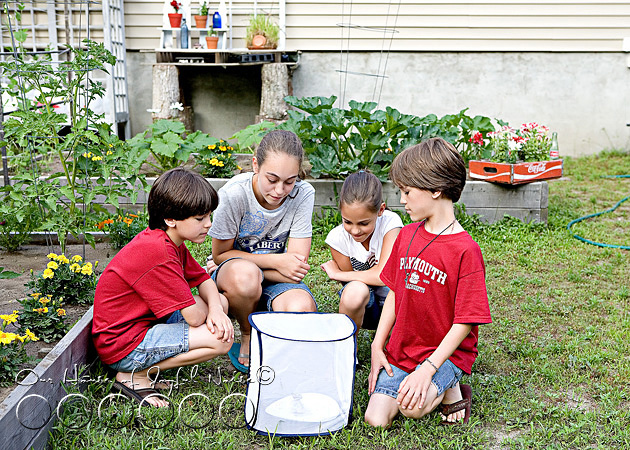
Our gardens seemed to be the perfect place to let them go, as well. We hoped perhaps they would stick around the garden beds for at least a few days, and do some pollination work for us! But first, the kids took a few more minutes to just watch their Painted Ladies, and say goodbye.
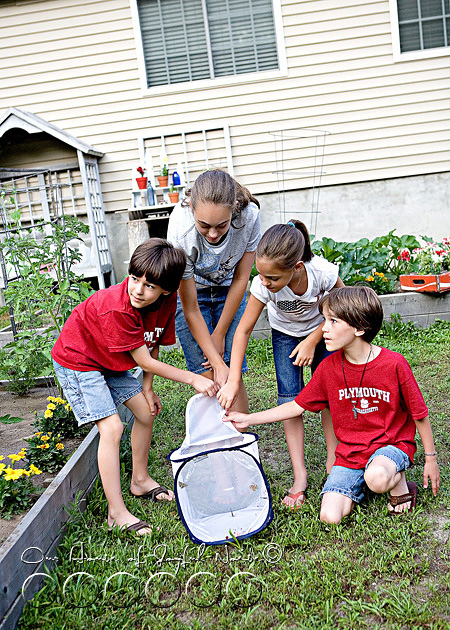
Then they opened the door, to set them free.
One flew out right away!

The others needed some encouragement.
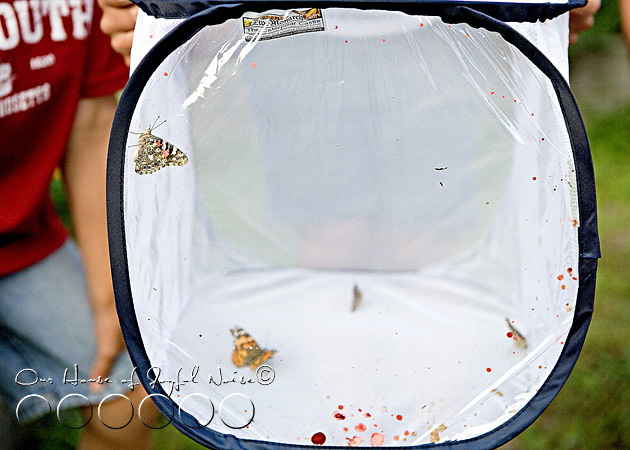
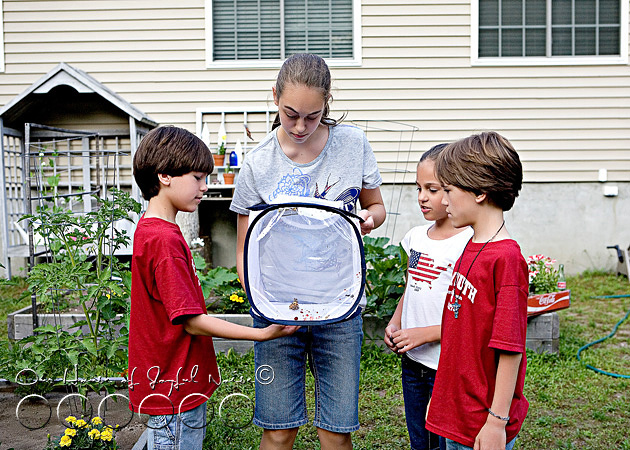
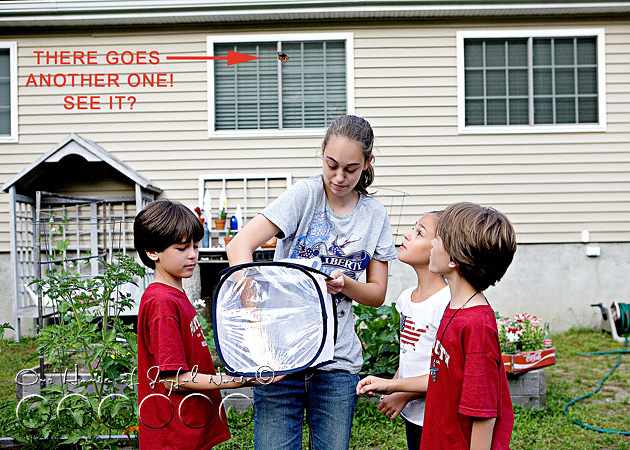 Finally, out flew another. {A} was reaching in to lift one that was determined not to move…
Finally, out flew another. {A} was reaching in to lift one that was determined not to move…

….while out flew 2 more.

This one seemed quite as hesitant to leave us, just as we have been to let them go.

 Soon, it fluttered off the kid’s hands, to a nearby garden flower.
Soon, it fluttered off the kid’s hands, to a nearby garden flower.
We really enjoyed this study, and plan to return to The Butterfly Boutique again very soon, to spend some time in their Butterfly House, which is a screen house guests can enter, full of plants, flowers, a water fountain, and you guessed it…..lots of live butterflies! There’s also a Gift Shop, with beautiful butterfly-related jewelry, home decor, and more. And the Hungry Caterpillar Snack Bar! The boutique as a whole is a small but charming and fun place, for kids and adults alike. If you live nearby, or find yourself visiting Cape Cod, The Butterfly Boutique is very near both the Sagamore and Bourne Bridges. Visit their web site to get more information, and their exact location, which is so easy to get to.
As you probably know, butterfly kids can be ordered online as well, such as from here. There is also numerous resources to assist you and your children with educational information and activities. I have gathered just a couple of links for you today. For your younger ones, this web site has simple and minimal basic information about the life-cyle of the butterfly. Here is a print-out as well, to just review, or use as a guide with what to expect, as you are hatching your own butterflies. For your older children (middle school +), this link offers more in-depth information about the life of butterflies.
It’s important to remember, that children who have fun learning, will enjoy it and seek to learn more. Case in point, our children have continued to use the butterfly pavilion, with self-launched studies all on their own. Following the release of our butterflies, the kids found a HUGE furry, nasty-looking cocoon in our woods, and were excited to see what would emerge! (I was rather scared. I thought maybe a bear….or one of those seemingly evil hummingbird-moth-things.) I will share photos of what came of THAT pupa, on our Facebook Page, very soon! So be sure you are following us! At this very moment as I type, that pavilion now holds 11 moths, and 1 large grasshopper, as the kids study them.
The learning never ends, at Our House Of Joyful Noise. Thanks for visiting with us for this post, and please feel welcome to share your own experiences, studies and observations, with butterflies, or any other insects!

We just love raising caterpillars and butterflies. If you find some milkweed nearby you could try monarchs….beautiful!
That looks awesome. My favorite day-trip spot growing up was a beautiful butterfly garden. I learned a lot from your post, so I know your kids learned a bunch. How cool!